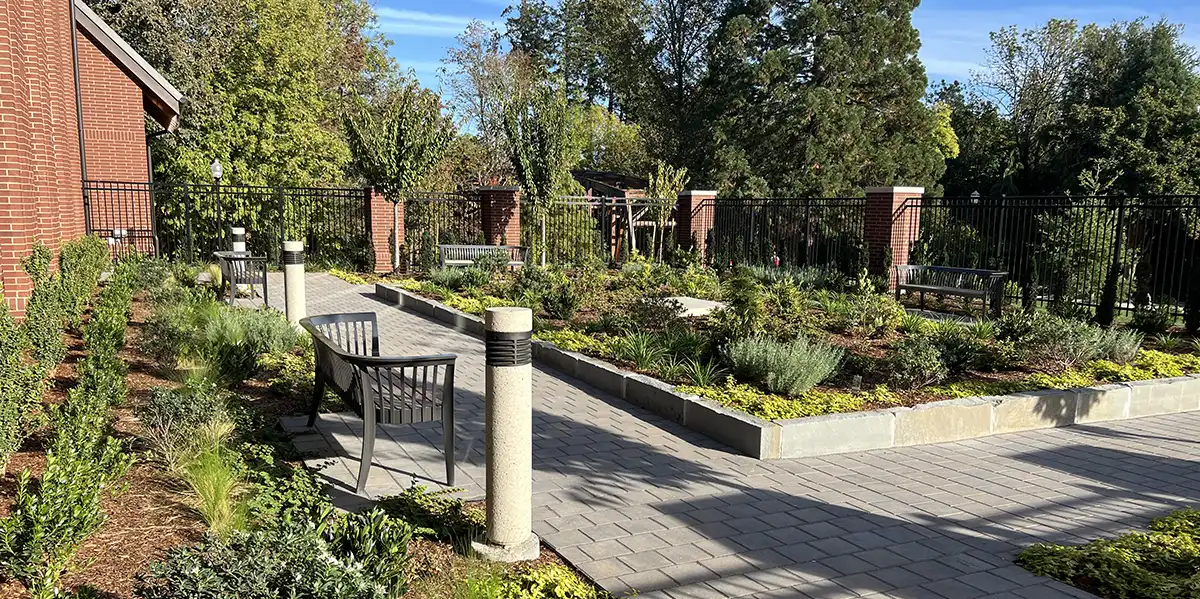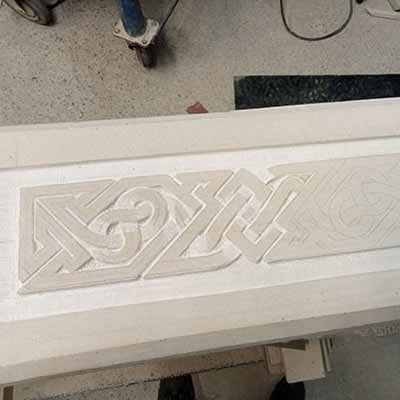
Alumni Garden & Celtic Cross
The Alumni Garden
The Alumni Garden is a peaceful, contemplative space designed for our community to deepen their connection with God. At its heart will stand a 12-foot-tall Celtic Cross adorned with imagery from the Old and New Testaments. Surrounding the cross are several benches, inviting those who seek a moment of reflection.
The garden also features a beautiful brick pathway, where donors have dedicated bricks in honor of someone special. These engraved names represent generations of George Fox alumni, friends, parents, faculty, and staff, each a testament to Christ's goodness in our lives and the joy of encountering Him daily. The Alumni Garden symbolizes our ongoing commitment to a legacy of faith, unity, and a community that seeks to make a positive impact on the world.
The Celtic Cross

At the heart of the chapel's Alumni Garden will stand a 12-foot-tall Celtic cross, hand-carved from sandstone. This monumental cross will feature intricate biblical imagery, with scenes from the Old Testament on one side and the New Testament on the other.
Renowned Irish artist Brendan Mc Gloin, known for his masterful stonework, sculpted the cross at his home in Ireland. He was very close to finishing the piece before he sadly lost his battle to cancer on April 4, 2025. Two of Mc Gloin’s mentors will make sure his final work of art is completed.
Mc Gloin’s passion for stone carving was ignited through his work on significant restoration projects in the UK, Australia, and New Zealand, including Sydney’s St. Mary’s Cathedral. His work has gained recognition both in Ireland and internationally. Among his most notable creations is a 14-foot Irish high cross, part of the Oregon Irish Famine Memorial at Mount Calvary Cemetery in Portland. The cross is a replica of the medieval Cross of the Scriptures at Clonmacnoise, highlighting his dedication to preserving Irish heritage.
Celtic crosses, or Irish high crosses, are iconic symbols found at ancient monastic sites across Ireland. They represent Ireland’s most significant contribution to Western European art during the Middle Ages, blending Celtic artistry with Christian symbolism. These crosses are often distinguished by the circular ring at the intersection of the arms and shaft—commonly known as the "Celtic cross"—which is thought to symbolize eternity or the heavens. The intricate designs, including interlacing patterns and biblical scenes, served as a visual tool to help monks teach the Gospel to early Christian communities.
A couple of months before Mc Gloin’s death, a George Fox Digital video crew visited him in his home to see him at work and explore the significance of Irish high crosses.

